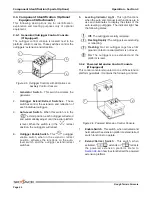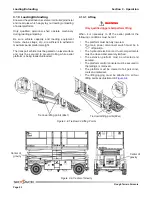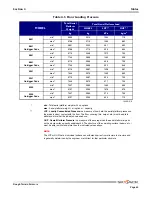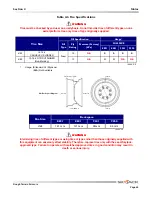
Rough Terrain Scissors
December 2007
Page 53
Section 3 - Operation
Refueling Procedure
3.9 Refueling Procedure
This section provides the operator with the procedure
on how to refuel the engine with regular fuel and install
the propane cylinder.
IMPORTANT
Before using the aerial platform ensure
there is enough fuel to finish the job.
WARNING
Failure to heed the following safety
precautions could result in death or
serious injury:
•
Use extreme caution while refueling
aerial platforms.
•
Ensure engine and all systems are
turned off before refueling.
•
Refuel aerial platform only in a well
ventilated area away from open
flame and other sources of ignition,
authorized by your employer and
supervisor.
•
To minimize possible static electricity
fires, ensure filler nozzle touches rim
of filler opening to aid the dissipation
of static electricity.
•
Never try to start an aerial platform if
you smell gas.
WARNING
Do not smoke in an area where aerial
platforms are stored or refueled.
3.9-1 Regular Fuel (Diesel)
1.
Ensure engine and all systems are turned off and
emergency stop buttons are depressed.
2.
Open fuel compartment door and remove fuel
cap.
3.
Carefully fill the fuel tank ensuring that no spillage
occurs.
4.
Securely replace fuel cap.
5.
Ensure there are no leaks in the fuel system.
6.
Wipe up any spilled fuel.
7.
Dispose of rags in an approved container.
Protection of Environment from Chemical
Dangers
WARNING
Gasoline, diesel fuel, engine oil and
hydraulic fluid are chemicals, which can
contaminate the environment. If they
are spilled during filling and reach the
water, they can cause damage to the
environment, e.g., death of fish. For
such damage, the party responsible is
liable! Therefore, gasoline, diesel fuel,
engine oil or hydraulic fluid must not get
into the sewage system, streams, rivers
or other surface water. For that reason,
immediately remove the dripped off or
spilled gasoline, diesel fuel, engine oil
or hydraulic fluid with appropriate means
and dispose of these means according to
the regulations.



































